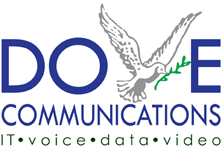WHAT IS PRIMARY RATE INTERFACE (PRI)?
Primary rate interface, or PRI, is a 23-channel telephone system that carries multiple concurrent transmissions between a network and its user. These transmissions consist of voice, data and video traffic and are all connected by a physical circuit made up of copper wiring. Enterprise-level businesses with high-volume and high-capacity operations can benefit from this system due to its reliability, and adaptability. This traditional system has many advantages and is a proven, reliable system that has been around since the 80s.
You may be wondering why, with the growth of VoIP, a business would benefit from Primary Rate Interface? PRI uses circuit technology through a T1-line, it provides 64 Kbps for data transmission, has an internet speed of up to 1.544 Mbps, and it is built-in through your business’s network and telephone infrastructure. This circuit telephone system includes 23 channels that support 23 voice calls with features like caller ID through a separate channel; there is no need for an internet connection or the use of data bandwidth. This can alleviate the impact of an internet or system outage.
Primary rate interface is a carrier service that has been a reliable connectivity system that many businesses love and continue using to this day. Due to its continued success, companies may find that switching over to a PRI system or retaining your current PRI system may be precisely what your organization needs to grow and expand.
Learn about Dove Communications’s Carrier Services, including PRI.









